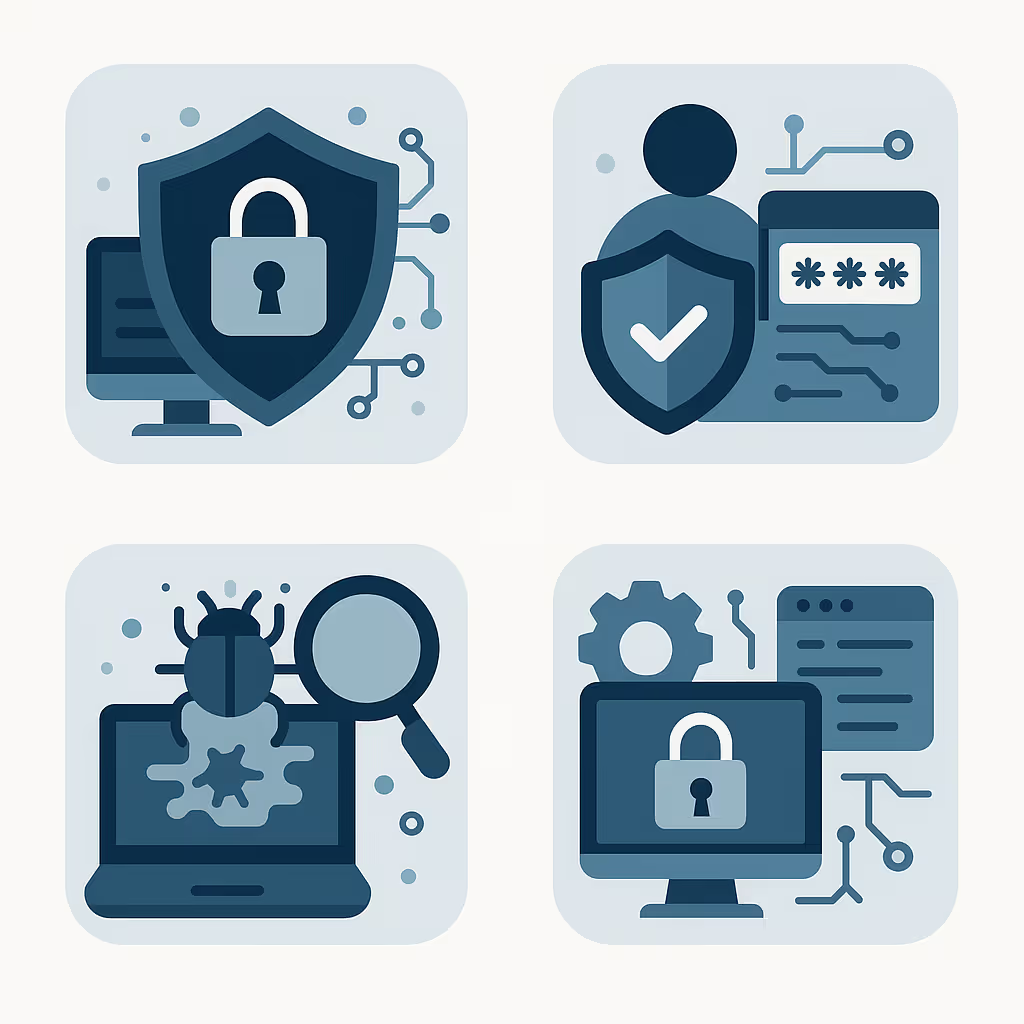Innovate the next‑generation of digital defense. Cybersecurity firms, enterprise security teams and start‑ups working on advanced threat detection, encryption, automation and resilience are engaging in R&D‑style work that often qualifies for federal and state R&D tax credits.


Examples of qualifying activities in cybersecurity
- AI/ML‑Based Threat Detection & Response Designing and training models, iterating algorithms to reduce false positives, scaling for cloud‑wide data.
- Novel Encryption/Authentication Systems Creating next‑gen biometric/behavioural authentication, quantum‑safe encryption, novel key‑management systems.
- Incident‑Response Automation & Orchestration Developing systems that automate triage, containment and remediation workflows, experimenting with work‑flow logic, integration with sensors/logs.
- Secure Network Architecture & Zero‑Trust Frameworks Building and testing architectures for hybrid cloud, edge computing, IoT devices with threat models, simulation and resilience testing.
- Penetration/Red‑Team Tool Development Creating new pentesting frameworks, attack‑simulation platforms, validating system vulnerabilities under novel threat vectors.
What qualifies as R&D in Cybersecurity?

To qualify, cybersecurity R&D must:
- Aim at a permitted purpose — such as a new threat‑detection engine, a secure authentication protocol, an automated incident‑response platform, or advanced encryption method.
- Tackle technical uncertainty — for example: “Can we reliably detect new zero‑day exploits using machine‑learning under changing threat‑patterns?”, “Will this new authentication protocol scale securely for millions of users?”, “Can encryption be improved to resist future‑quantum attacks while maintaining performance?”
- Use a process of experimentation — algorithm training, red‑team/blue‑team simulations, versioning of threat‑detection models, iterative encryption protocol testing, scalability stress‑trials.
- Be technological in nature, grounded in computer science, network/security engineering, cryptography, machine‑learning, automation of incident‑response or systems architecture.
Qualified Research Expenses (QREs)
Roles commonly involved in qualifying activities
- Security Engineers & Protocol Developers
- Data Scientists & ML Engineers for threat modelling
- Incident‑Response Automation Architects
- Red‑Team/Pen‑Test Specialists
- Network/Cloud/Edge Security Architects
- External research partners or labs
What does not qualify
- Routine monitoring, patching, compliance checks without experimentation
- Configuring off‑the‑shelf security tools without making technical improvements
- Marketing, training, user‑awareness programs, general IT support
- Infrastructure purchases without documented experimental test‑programs
Compliance and Documentation
Following the One Big Beautiful Bill Act (OBBBA) signed July 4, 2025, §174 now allows immediate expensing of domestic research expenses for tax years beginning on or after January 1, 2025. Taxpayers may also elect optional amortization under new §174A. Foreign research expenses must still be amortized over 15 years. This is separate from the §41 credit but impacts overall tax planning.
Be sure to capture:
- Project briefs defining technical uncertainties (e.g., “Can our new ML engine identify sophisticated APT behaviour in <1 second with <0.1% false positives?”)
- Test logs, versioning of algorithms, red/blue‑team trial outcomes, iteration history
- Time logs by research team members, payroll codes, staff assignment to project tasks
- Resource usage documentation (compute hours, testbed logs), contractor/consultant agreements
Frequently Asked Questions


Yes—if their work includes true experimentation, algorithm/protocol innovation or systems architecture testing rather than operational security.


Wages of engineers/researchers, supplies used in prototypes/trials, cloud/simulation costs, and third‑party contract research.


Projects such as developing new threat‑detection engines, encryption/authentication protocols, response‑automation systems, secure network architectures.


Routine infrastructure maintenance, general compliance work, off‑the‑shelf tool implementation without improvement, marketing/security training.


Detailed project scopes, hypotheses/uncertainties, logs of experiments/trials, iteration history, staff time‑allocation records and test‑data.
Next Steps
Use our calculator to estimate your potential federal and state benefits
Schedule a consultation to structure your row crop research activities
If you are innovating in agriculture, you may already be doing R&D. Let's make sure you are rewarded for it.
Contact Strike Tax Advisory
Ready to maximize your R&D tax credits? Get in touch with our team of experts.






